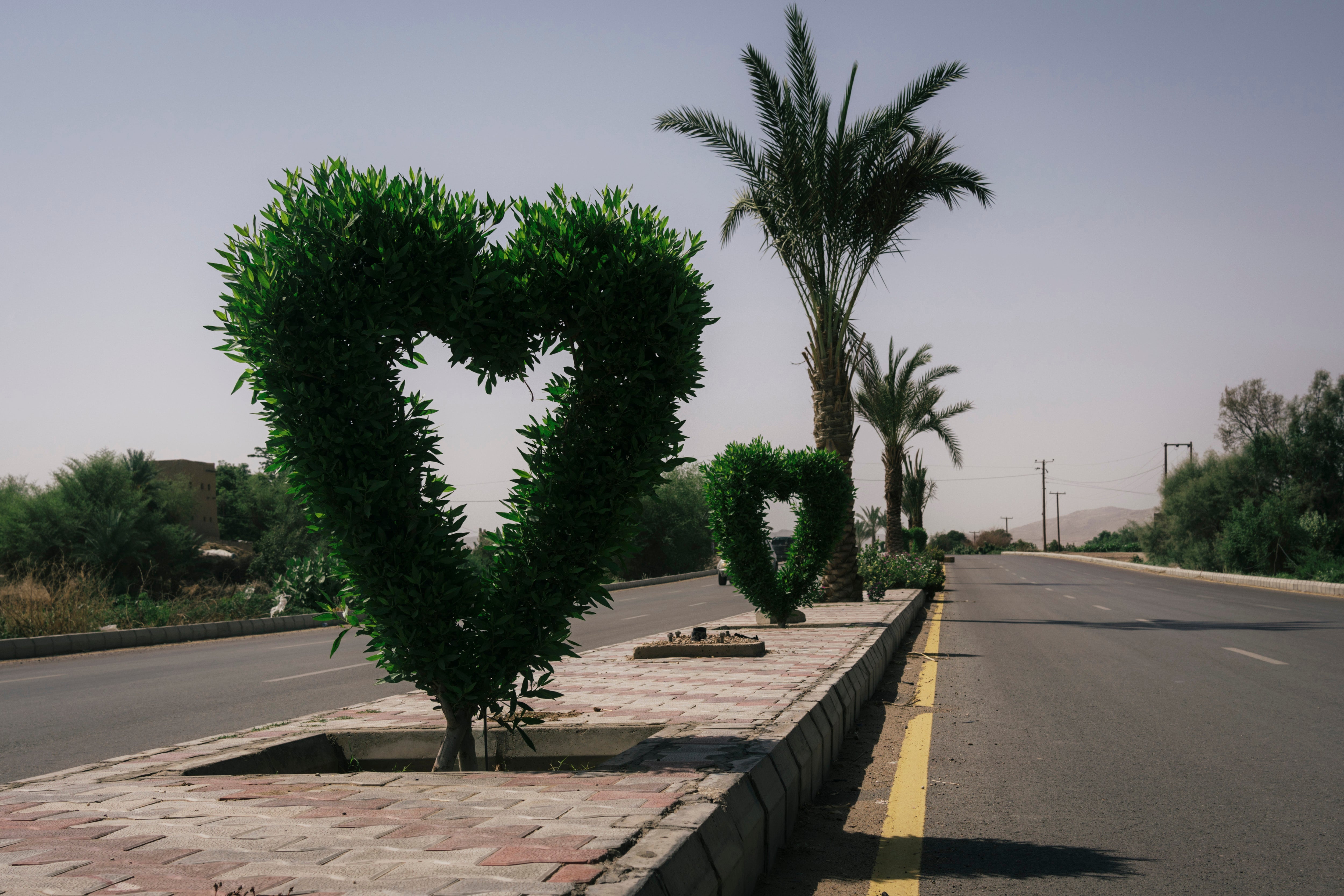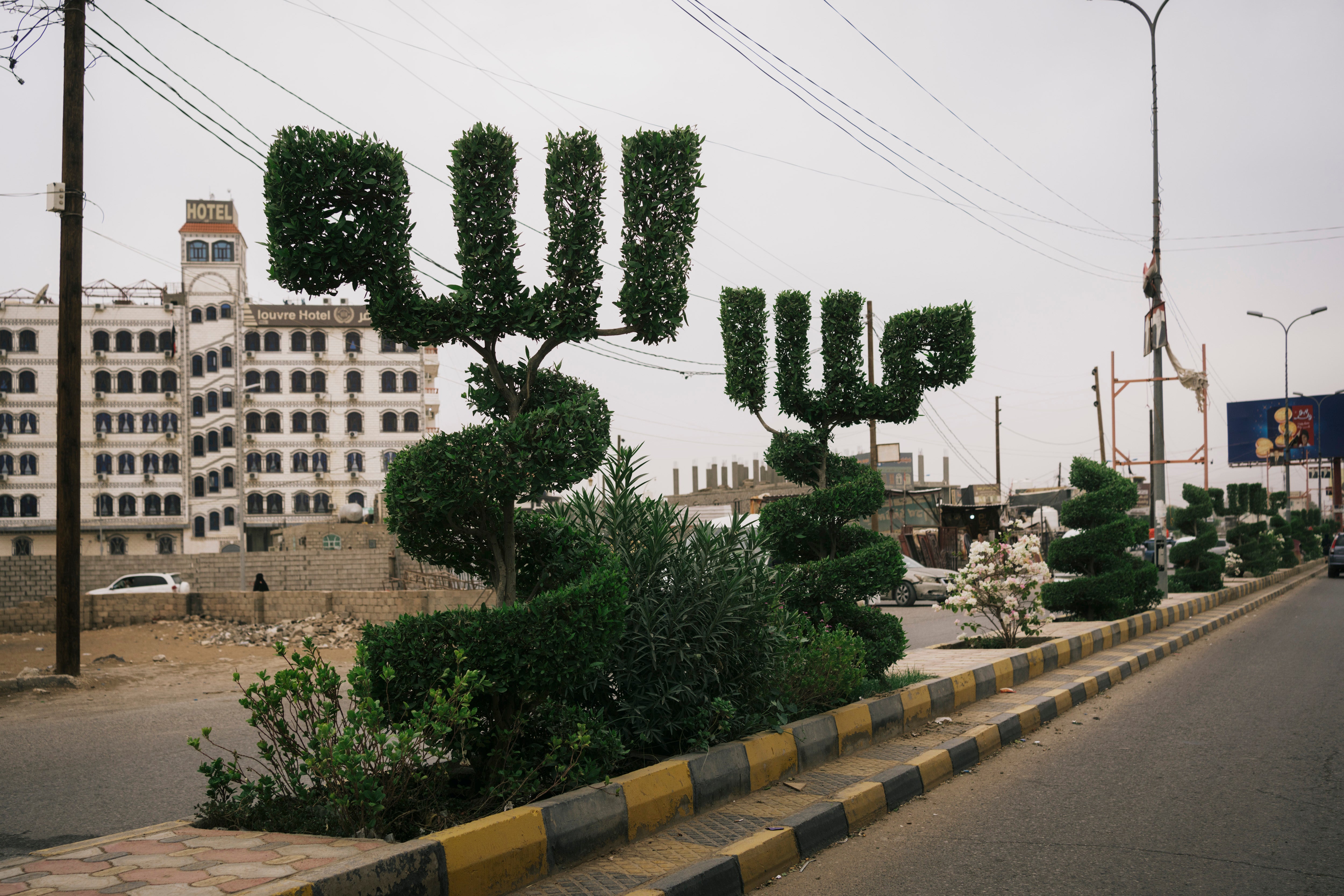‘An unusual sight for a war zone’: Yemen’s sculpted trees
The two men responsible for the trees explain to Siobhan O’Grady their belief that creating something beautiful can change a community for the better

Your support helps us to tell the story
From reproductive rights to climate change to Big Tech, The Independent is on the ground when the story is developing. Whether it's investigating the financials of Elon Musk's pro-Trump PAC or producing our latest documentary, 'The A Word', which shines a light on the American women fighting for reproductive rights, we know how important it is to parse out the facts from the messaging.
At such a critical moment in US history, we need reporters on the ground. Your donation allows us to keep sending journalists to speak to both sides of the story.
The Independent is trusted by Americans across the entire political spectrum. And unlike many other quality news outlets, we choose not to lock Americans out of our reporting and analysis with paywalls. We believe quality journalism should be available to everyone, paid for by those who can afford it.
Your support makes all the difference.On a desert road at the entrance to this battle-ravaged city, government troops search cars and check papers, AK-47 rifles slung over their scrawny shoulders.
But once travellers are waved through the checkpoint, they immediately encounter an unusual sight for a war zone: a row of bright green trees trimmed into the shape of enormous hearts.
A drive further into the city reveals a garden of other horticultural delights. Trees pruned into the forms of ducks and camels. Trees barbered to resemble incense pots and traditional Yemeni daggers. Trees sculpted into perfect spheres and pyramids. Trees snipped to spell out “Allah” in Arabic script.
On the outskirts of this urban enclave, located near the front lines of Yemen’s long civil war, government troops backed by a Saudi-led coalition are battling Houthi rebels for control of Marib province – the government’s last major stronghold in the north. The death toll has soared in the past year, both on the battlefront and in the city, which has been targeted by missiles and other attacks. At least 100 civilians, including children, were killed or injured in Marib province just last month.
But along the provincial capital’s pavements and roads, the intricately groomed trees suggest that there are still efforts to breathe new life into Marib.
Taleb Mudendin, the mastermind behind the city’s gardening enterprise, sees the trees as a reprieve for residents here after years of conflict and displacement.
In Marib, he says, cattle sometimes trampled the team’s hard work. Pedestrians at times broke branches off the trees. Some people told them the decorative trees were ‘useless’
“Especially since the war came closer to the city, I found a stronger purpose for the work I am doing,” Mudendin says. “I feel it brings hope and a sense of calm amid all the chaos that is happening.”
Officials in Marib began exploring this beautification initiative in 2016, Mudendin says.
At the time, he was overseeing a similar gardening project in his hometown of Seiyun, around 270 miles to the east. He had first delved into the world of plants and trees in 2005, when – as a student hoping to become an electrician – he worked part-time at a nursery. Financial constraints prevented him from finishing his formal training, he recalls, so in 2007 he shifted to nursery work full-time.
It was there that his dreams began to take root. He saved up his money and, after marrying in 2009, secured a plot of land on which he opened his own small nursery.
Later that year, he says, a contractor hired him to help landscape a main road running through Seiyun. Mudendin helped him trim the trees into several shapes, including a pyramid and a spiral. More projects followed, and soon Mudendin was asked to shape the trees in a local park.
By 2010, Mudendin’s green thumb had intrigued officials in Seiyun. The next year, he landed a formal job beautifying the city. His efforts were such a success that he was quickly allowed to expand his team.

“I was searching for people who are both interested in landscaping and are also creative, to be able to use their imagination,” he says. A good landscaper, he added, “should also be patient and enjoy this kind of work”.
Within a few years, he had expanded the team to 50 people: 41 gardeners, four water-truck drivers and five assistants to help water the trees.
In 2016, he and several colleagues visited Marib, where the authorities hoped to draw inspiration from Seiyun. The next year, Salem al-Katheeri, who was working with Mudendin in Seiyun, agreed to move to Marib to oversee its landscaping projects.
It was like being handed a blank slate, recalls Katheeri, a soft-spoken man with thick black hair combed to one side.
“The road dividers were empty and they were neglected,” he says. “Trees were not taken care of or even watered.”
They move around the branches quickly and methodically, like seasoned hairdressers who hardly need to look. Clumps of leaves fall to the ground
Katheeri soon recruited Mudendin to help. A quick survey revealed that until then, the city’s gardeners had relied mainly on three kinds of trees: the palm, the ficus and the oleander, Mudendin recalls.
“The problem was with the ficus,” Mudendin says. It’s popular in cooler parts of Yemen, but pairing it with Marib’s desert climate made for a bad match. But before ripping them out, they planted replacement Conocarpus trees, or buttonwoods, nearby, and gave them time to grow. Over the following years, thousands of new trees were planted in the city.
Soon, the Marib team was also growing – and learning. Mudendin taught them simple shapes first: the pyramid, the spiral, the cylinder. Sloppy clipping soon became precise, and simple shapes turned into more complex designs.
The work wasn’t always appreciated. Even Mudendin’s mother doubted his landscaping work would help him provide for the family.
In Marib, he says, cattle sometimes trampled the team’s hard work. Pedestrians at times broke branches off the trees. Some people told them the decorative trees were “useless”, he recalls, urging him to instead plant “‘useful things like fruits or vegetables; like oranges or mangoes’”.
Some passers-by, seeing the trimming in action, would even stop and say, “‘What are you doing? You’re harming the trees!’” Katheeri says.

When some Marib officials questioned the investment in such a project, Katheeri says, he offered them a deal. “‘Give us six months, and if you don’t see a difference, we will take it away,’” he recalls telling them.
After six months, he says, “they were amazed”.
Both men remained steadfast in their belief that creating something beautiful can change a community for the better. They have brightened the streets and pavements, but also the passport and tax authority offices and around two dozen other government buildings, Katheeri says.
“It gives people here hope that life will continue,” he says. “And for the ones who come back from the battlefield, they feel there is progress and development.”
On a recent afternoon, two young men are standing in the middle of a road that leads out of the city, towards camps for Yemenis displaced by fighting elsewhere in the province and the country. Both have recently fought on the front lines. But on this day, they are armed not with weapons but with enormous gardening shears.
They move around the branches quickly and methodically, like seasoned hairdressers who hardly need to look. Clumps of leaves fall to the ground.
Soon, each tree is transforming into the shape of a three-layer cake.
“I feel calm and satisfied when I’m doing this,” says Mohammed Abdullah, 22.
His colleague, Abdo Hassan Ali Dawood, 24, agrees. The tree-trimming, he says, has begun to feel more like a calling than a job.
“We feel proud to produce such beauty,” he says, “even within the difficult circumstances.”
© The Washington Post




Join our commenting forum
Join thought-provoking conversations, follow other Independent readers and see their replies
Comments